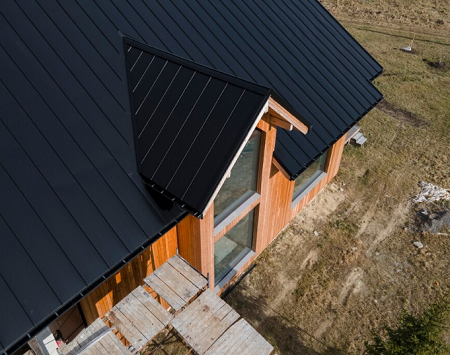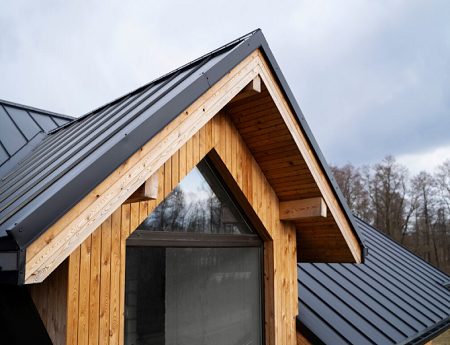Energy-Efficient Roofing: How Repairs Can Slash Utility Bills
Your roof plays a critical role in your home’s energy efficiency. Over time, even small issues like leaks or insufficient insulation can lead to rising energy costs. By addressing these problems, you can not only save money but also create a more comfortable and eco-friendly living space. In this guide, we’ll explore how repairing leaks and upgrading insulation can make a tangible difference.
If you’re considering roof repairs or upgrades, it’s essential to work with experienced professionals. Companies like https://longislandroofs.com/ can help evaluate your roof’s condition and recommend energy-saving solutions tailored to your needs.
Why Energy-Efficient Roofing Matters
When it comes to energy efficiency, your roof is a key player. It acts as a barrier between your home and the outside environment, helping to regulate temperature. If your roof isn’t in top shape, it can lead to heat loss in the winter and excessive heat gain in the summer, forcing your HVAC system to work harder. This translates to higher utility bills and a larger carbon footprint.
By investing in targeted repairs and insulation upgrades, you can maximize your roof’s efficiency and reduce energy waste. But what makes a roof energy-efficient? Let’s break it down.
Signs Your Roof May Be Costing You Money
Many homeowners don’t realize their roof is contributing to high utility bills until it’s too late. Here are some telltale signs that your roof might need attention:
* Visible Leaks or Water Damage: Leaks allow conditioned air to escape, making your HVAC system less efficient.
* Drafts or Uneven Temperatures: Poor insulation or ventilation can cause hot and cold spots in your home.
* High Energy Bills: A sudden spike in utility costs could indicate heat loss or gain through the roof.
* Damaged Shingles or Flashing: Missing or damaged materials compromise your roof’s ability to keep out the elements.
Regular inspections can help you identify and address these issues before they escalate.
How Roof Repairs Improve Energy Efficiency
1. Sealing Leaks
Leaks are one of the most common roofing problems, and they can significantly impact energy efficiency. Even small gaps or cracks can let conditioned air escape, forcing your HVAC system to work harder to maintain a comfortable temperature.
Sealing leaks involves more than just patching holes. A thorough repair includes inspecting problem areas like flashing, joints, and vents to ensure the entire roof is airtight. This simple fix can prevent energy waste and reduce your monthly utility bills.
2. Replacing Damaged Materials
Over time, shingles, tiles, or metal panels can become damaged by weather, pests, or general wear and tear. Replacing these materials restores your roof’s protective barrier, helping to regulate indoor temperatures more effectively.
Opting for modern, energy-efficient materials during repairs can further enhance performance. For example, reflective shingles or cool roofs are designed to deflect sunlight and reduce heat absorption.
The Role of Insulation in Energy Savings
Insulation is often overlooked, but it’s a critical component of an energy-efficient roof. Without proper insulation, heat can escape during the winter and enter during the summer, undermining your home’s comfort and energy efficiency.
1. Types of Roofing Insulation
Several insulation options are available, each with its own benefits:
* Fiberglass Batts: Affordable and easy to install, but less effective in irregular spaces.
* Spray Foam: Provides excellent coverage and seals gaps, ideal for preventing air leaks.
* Rigid Foam Boards: Highly efficient and durable, suitable for flat roofs or retrofitting.
Choosing the right insulation depends on your roof’s structure, climate, and energy-saving goals.
2. Upgrading Insulation
If your roof’s insulation is outdated or insufficient, upgrading it can make a noticeable difference. Modern insulation materials are more efficient and environmentally friendly than older options. Installing high-quality insulation during repairs can save you money in the long run by reducing energy waste.
Ventilation: The Unsung Hero of Energy Efficiency
Ventilation works hand-in-hand with insulation to maintain a balanced indoor temperature. Without proper ventilation, heat and moisture can build up in your attic, leading to issues like mold, ice dams, and decreased energy efficiency.
How Ventilation Helps
* Regulates Temperature: Prevents overheating in the summer and reduces heat loss in the winter.
* Extends Roof Life: Minimizes the risk of moisture damage and material degradation.
* Lowers Energy Costs: Reduces the strain on your HVAC system by maintaining a stable indoor climate.
Adding or improving vents in your roof can enhance overall performance and energy savings.
Smart Roof Upgrades for Maximum Savings
Beyond basic repairs and insulation, there are several upgrades that can further boost your roof’s energy efficiency:
1. Cool Roofing Materials
Cool roofs are designed to reflect more sunlight and absorb less heat than traditional materials. Options include reflective shingles, metal roofing, and coatings that increase reflectivity. These materials can lower your roof’s surface temperature by up to 50°F, reducing cooling costs during the summer.
2. Solar Panels
Installing solar panels can turn your roof into an energy producer. While the upfront cost may be significant, solar energy can significantly reduce or even eliminate your electricity bills over time. Some states also offer tax incentives or rebates for solar installations.
3. Roof Coatings
A roof coating is a cost-effective way to improve energy efficiency without replacing your roof. These coatings are typically made of reflective materials that reduce heat absorption and extend the lifespan of your roof.
Maintenance Tips to Keep Your Roof Efficient
Maintaining your roof is key to preserving its energy-saving benefits. Here are some tips to keep it in top condition:
* Schedule Regular Inspections: Have a professional inspect your roof at least once a year to catch issues early.
* Clean Gutters: Clogged gutters can lead to water buildup and leaks, affecting insulation and efficiency.
* Trim Overhanging Branches: Prevent debris from accumulating on your roof and causing damage.
* Monitor Attic Conditions: Check for signs of moisture, mold, or poor ventilation.
Routine maintenance can extend your roof’s lifespan and ensure it continues to save you money on energy costs.
The Financial and Environmental Impact
Investing in energy-efficient roofing repairs and upgrades offers both financial and environmental benefits. Lower utility bills mean more money in your pocket, while reduced energy consumption helps decrease your home’s carbon footprint. Over time, these improvements pay for themselves through savings and increased property value.
Additionally, an energy-efficient roof can make your home more comfortable year-round, improving your overall quality of life. It’s a win-win situation for both you and the environment.
Conclusion
Your roof is more than just a shelter—it’s an essential component of your home’s energy efficiency. By addressing leaks, upgrading insulation, and considering smart materials and ventilation, you can transform your roof into an energy-saving asset. Not only will this reduce your utility bills, but it will also create a more sustainable home.
Whether you’re planning a repair or looking to upgrade your roof, partnering with professionals ensures the job is done right. With the right approach, you can enjoy long-term savings, enhanced comfort, and peace of mind knowing your roof is working hard for you.

